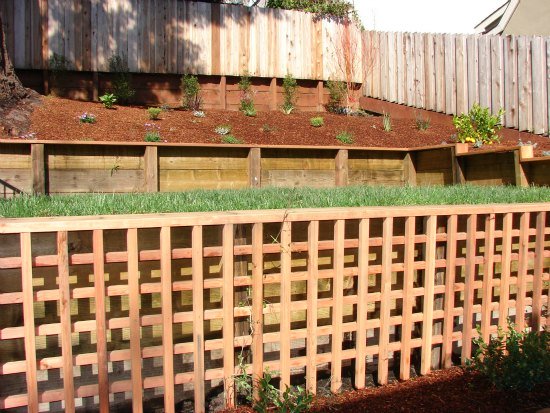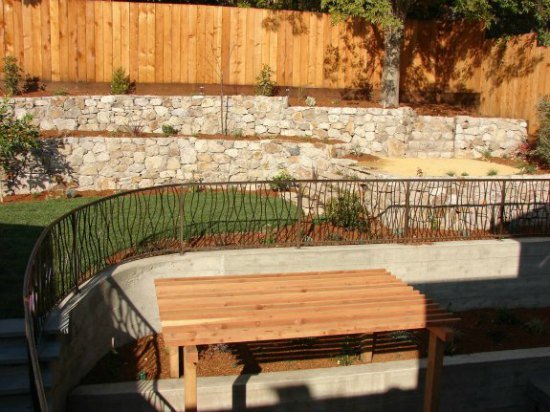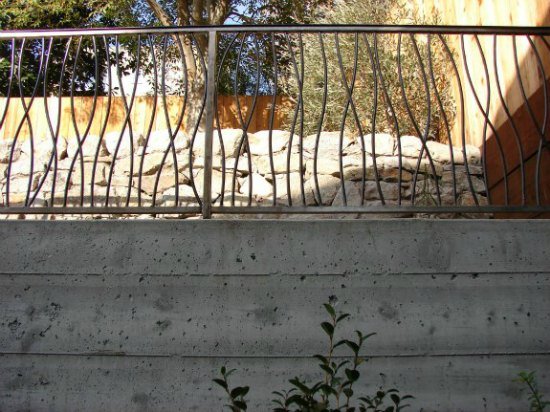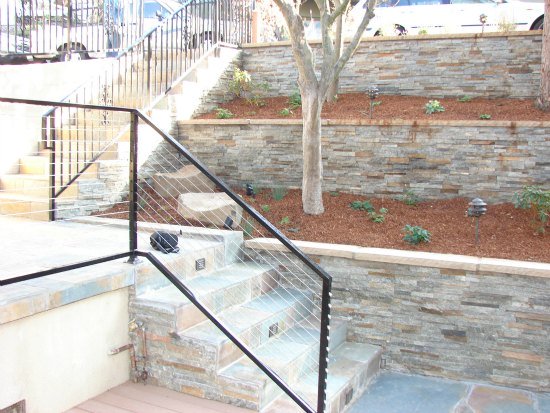Retaining Walls
Retaining walls are meant to resist lateral soil pressure when there is a
grading change that surpasses the angle of repose. Depending upon the height and
grade of the slope, the pressure on this barrier can be tremendous, especially in rainy or snowy weather. In
fact, improper drainage is the primary cause of failure. Therefore, expert planning and execution are vital. At Sarah
Ray Landscape Design, we specialize in these structures as well as yard drainage.
While these structures function like dams by holding the earth at bay, they must also fit with the aesthetics of their surroundings. Therefore, our designs marry functionality with style. For example, a softly sloping hill may be held in place with one small barrier or a few garden steps. Or a steep, long slope may need to be separated into terraces with several substantial structures. The resulting terraces can then be used for creative landscaping. In fact, a barrier like this can do more than just manage changes in grade in a landscape with uneven topography. It may also create a seat wall for outdoor socializing. Of course, this marriage of function and style depends on the materials that are used.
Materials for Retaining Walls
Wood, dry stacked stone, poured concrete, or mortared concrete masonry units are the primary materials that we use.

- Wood offers a warm, inviting look and is generally more economical than other materials. In fact, timber often blends more effortlessly into a landscape than other materials. We use rot resistant woods which work well with many landscaping designs.

- Dry stacked stone with no mortar can provide a casual, natural appearance. This has been the preferred means of building for centuries and when used in modern gardens can evoke a sense of another age. However, a more modern or formal look can also be created.

- Poured concrete is the most versatile and strongest material of all. It is ideal for areas with greater soil pressure. This material has unforgiving nature. However, in the hands of an experienced landscaper, it can create an extremely sturdy structure with a great look.

- Mortared concrete masonry units, also known as CMU’s, are used in place of poured concrete. They do not require framing, which makes them slightly less expensive, but they are still very attractive.